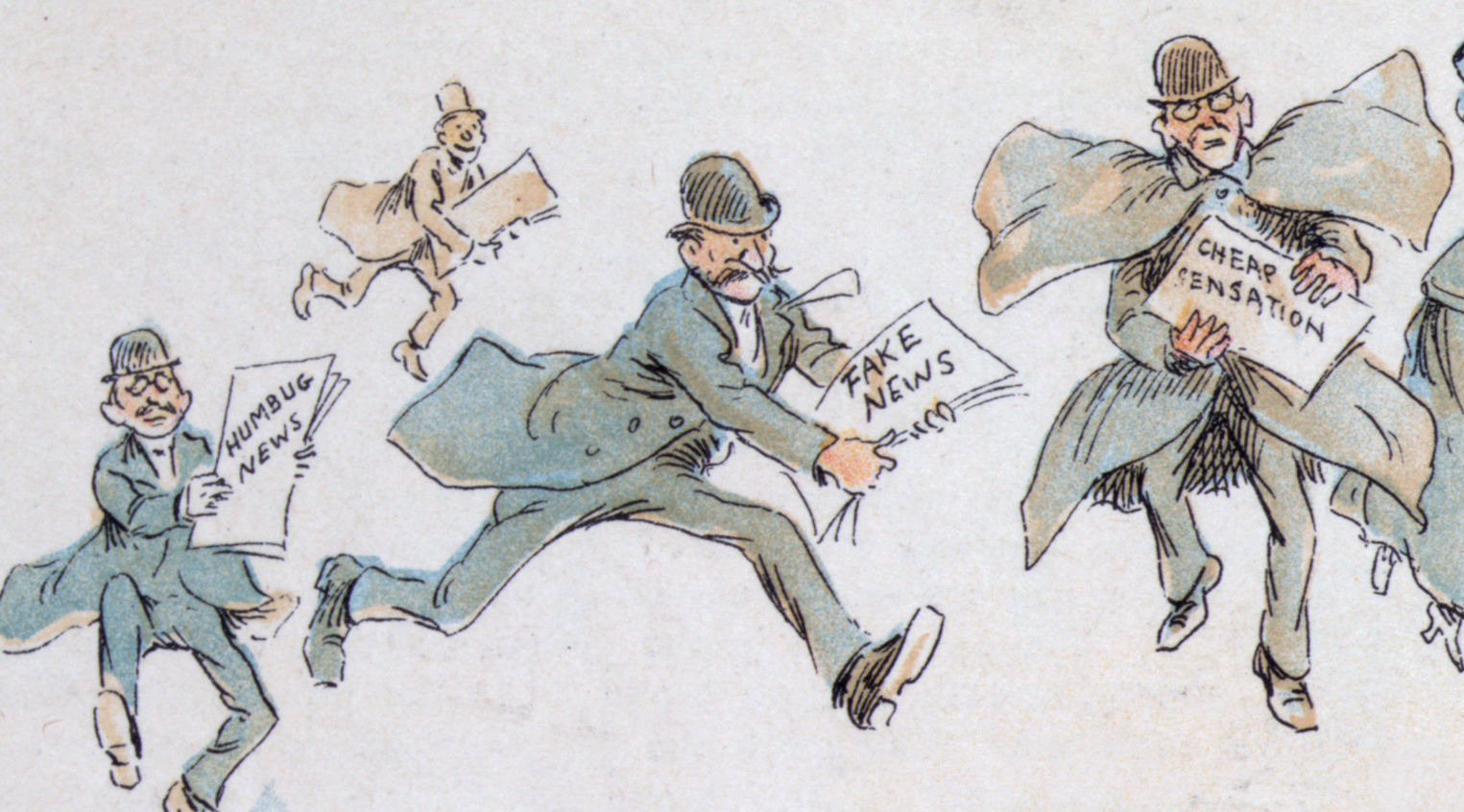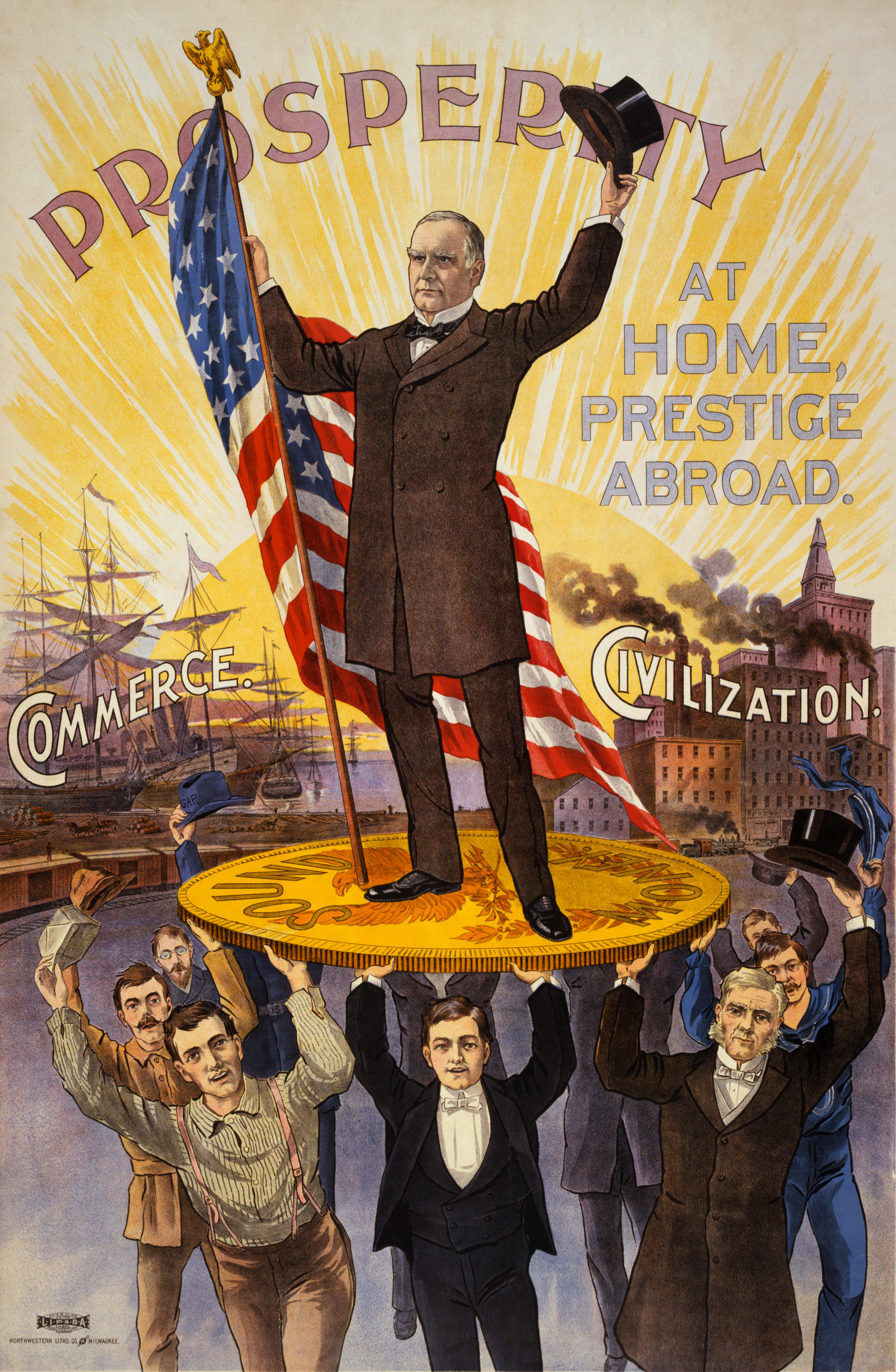Topics on the Page

Is Internet Access a Human Right?
Historical Examples of Fake News Stories
Evaluating Online Information
Evaluating News Stories
Deepfakes: Artifically-Generated Portraits
Evaluating Political Advertisements
.png) Cross-Link: The Mass Media
Cross-Link: The Mass Media
 Is Internet Access is a Human Right?
Is Internet Access is a Human Right?
Image by Frederick Burr Oppr, March 1894


Report of the Special Rapporteur on the Promotion and Protection of the Right to Freedom of Opinion and Expression (May 2011)
Special Rapporteur on the Promotion and Protection of the Right to Freedom of Opinion and Expression
- Office of the United Nations High Commissioner for Human Rights
Why Internet Access is a Human Right. Carnegie Endowment for International Peace (June 2017)
Americans and the News Media: What They Do--and Don't--Understand about Each Other, American Press Institute (June 11, 2018)
Historical Examples of Fake News Stories
- The Great Moon Hoax
- Confederate Black Soldiers
- Yellow Journalism
- The War of the Worlds
- The Malmedy Massacre
- The Five O'Clock Follies
For more information, link to Identifying Fake News
Who are Fact Checkers and What Do They Do, WikiTribune (2017)
 Evaluating Online Information
Evaluating Online Information
Link here for Online Fact Checkers and How to Distinguish Credible from Unreliable Resources
- Website Evaluation Strategies
- Sources of Reliable Content
- Examples of Hoax Websites
Top 10 Sites to Help Students Check Their Facts, ISTE (International Society for Technology in Education), February 1, 2018
 Evaluating News Articles
Evaluating News Articles

An Infographic from EasyBib identifies these questions to ask?
- Are there references, link or citations?
- Does the headline match the content?
- Are there spelling and grammatical errors?
- Are there any direct quotes incorrectly used or taken out of context?
- Does the article only showcase one side of an argument?
- Is the story completely outrageous?
For more on what makes a resource accurate and safe
Turn Students into Fact-Finding Web Detectives, Common Sense Education
Do the Facts Hold Up? NewseumEd
Why is Bias an Issue When Searching for Resources?
It is important to determine if an article or resource was written with bias as it could skew the presentation of information in order to promote the goal of the author. For example in politics the same event can be presented in multiple ways in order to promote the agenda of the source. When reading an article or other resource it is important to take steps to determine if it includes bias or not because the actual truth of what occurred at the event may be altered in ways the reader is unaware of.
How to Determine if an Article Contains Bias:
The link below explains simple steps the reader can take to determine levels of bias in articles.
https://www.wikihow.com/Recognize-Bias-in-a-Newspaper-Article
YouTube Video that Explains How to Tell if Something in Writing is Fact or Opinion:

These people in the photos do not exist,
but are generated by an artificial intelligence program


Deepfakes: Artificially-Generated Portraits
#Operation FSS: Fake Face Swarm (December 2019), a report by Graphika & the Atlantic Council's Digital Forensics Lab
Facebook Removes Hundreds of Fake Pro-Trump Accounts Using AI-Generated Profile Photos, Forbes, December 20, 2019
Election of 1900 Campaign poster showing William McKinley holding U.S. flag and standing on gold coin "sound money",
held up by group of men, in front of ships "commerce" and factories "civilization"
Library of Congress/Public Domain

Evaluating Political Advertisements
World War I Anti-Waste Campaign - Posters drawn by Charles Dana Gibson and used by the U.S. Food Administration (1917)
National Archives/Public Domain

John F. Kennedy presidential campaign Poster, 1960/
Wikimedia Commons/Public Domain


Comments (0)
You don't have permission to comment on this page.